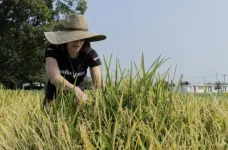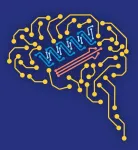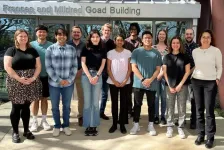(Press-News.org) ROCHESTER, Minn. — About 8 to 10 million Americans over age 40 have an overabundance of cloned white blood cells, or lymphocytes, that hamper their immune systems. Although many who have this condition — called monoclonal B-cell lymphocytosis (MBL) — do not experience any symptoms, a new study shows they may have an elevated risk for several health complications, including melanoma, a form of skin cancer. The findings, by Mayo Clinic researchers, are published in a new paper in the Journal of Clinical Oncology.
People with MBL fall along a spectrum that spans from a low amount to a high amount of these dysfunctional lymphocytes. Previous research has shown that MBL is a precursor to a type of blood and bone marrow cancer known as chronic lymphocytic leukemia (CLL). People with CLL also have a heightened risk of melanoma.
"Our study is the first to show that people with this pre-cancerous stage of MBL have a 92% elevated risk of developing melanoma. The risk of melanoma is similar to what we see among people with chronic lymphocytic leukemia," says Susan Slager, Ph.D., researcher with the Mayo Clinic Comprehensive Cancer Center and senior author of the study.
The findings suggest that having MBL, even at low levels, can serve as a biological signal, or biomarker, for early detection of melanoma, which is increasing worldwide.
Dr. Slager and her research team have been studying the largest available cohort of individuals — more than 7,000 people screened for MBL through the Mayo Clinic Biobank. The researchers have now followed these individuals for about four years and are finding a collection of potentially related diagnoses among those who screened positive for MBL.
In addition to the increased risk of melanoma, the researchers found that people with MBL were also at higher risk of cancers originating in the lymphatic system and hospitalizations due to serious infections including from COVID-19.
"Previously, scientists would equate MBL as just a part of the aging process. What we're seeing, though, is there are clinical consequences to having MBL — contracting serious infections and melanoma are some of them," Dr. Slager says.
Technological advances provide a closer look
Advances in flow cytometry, a high-resolution technology that enables researchers to look at cells in the blood and identify their varied physical characteristics, has helped propel this research. Clinicians and researchers can now identify people with MBL, the precursor to CLL, more easily.
People with CLL have a very high number of these identical circulating lymphocytes: more than 5,000 lymphocytes per microliter. (A microliter is about 1/50th of a drop of blood.) That's compared to a person with MBL, who typically has 1-5 of these circulating lymphocytes per microliter of blood. Through more sensitive flow cytometry, scientists can identify people earlier when their levels are still low.
"The risk of melanoma seems to be the same no matter how many of these cloned lymphocytes are in the blood, suggesting that just having a clonal population of these lymphocytes — meaning, having MBL— increases your risk of getting melanoma," she says.
Patients with CLL are encouraged to get annual skin cancer screenings by a dermatologist and to protect their skin from sun exposure to prevent melanoma.
"Our findings suggest that people with the precursor MBL stage should also be more diligent about following the established guidelines for skin cancer prevention including, for example, use of sunscreen and protective clothing," Dr. Slager says.
Next steps
One of the questions Dr. Slager's team plans to explore next is whether there is a genetic overlap between MBL, CLL and melanoma. One hypothesis is that inheriting a genetic variant that increases the risk of MBL and CLL may also increase the risk of melanoma.
Another area the researchers are investigating is whether MBL impacts the clinical outcome among people with melanoma, including if having both MBL and melanoma reduces one's overall survival or affects a person's response to therapy.
Review the study for a complete list of authors, disclosures and funding.
###
About Mayo Clinic
Mayo Clinic is a nonprofit organization committed to innovation in clinical practice, education and research, and providing compassion, expertise and answers to everyone who needs healing. Visit the Mayo Clinic News Network for additional Mayo Clinic news.
About Mayo Clinic Comprehensive Cancer Center
Designated as a comprehensive cancer center by the National Cancer Institute, Mayo Clinic Comprehensive Cancer Center is defining new boundaries in possibility, focusing on patient-centered care, developing novel treatments, training future generations of cancer experts and bringing cancer research to communities. At Mayo Clinic Comprehensive Cancer Center, a culture of innovation and collaboration is driving research breakthroughs that are changing approaches to cancer prevention, screening and treatment, and improving the lives of cancer survivors.
END
Mayo Clinic study finds dysfunctional white blood cells linked to heightened melanoma risk
2024-09-06
ELSE PRESS RELEASES FROM THIS DATE:
100x improvement in sight seen after gene therapy trial
2024-09-06
PHILADELPHIA— The vision of people with a rare inherited condition that causes them to lose much of their sight early in childhood was 100 times better after they received gene therapy to address the genetic mutation causing it. Some patients even experienced a 10,000-fold improvement in their vision after receiving the highest dose of the therapy, according to researchers from the Perelman School of Medicine at the University of Pennsylvania who co-led the clinical trial published in The Lancet.
“That 10,000-fold improvement ...
Gene therapy restores vision in first-ever trial for rare, inherited blindness
2024-09-06
After the treatment, one patient saw her first star. Another saw snowflakes for the first time. Other patients were newly able to navigate outside of the home or to read the labels on their child’s Halloween candy.
The cause of these seemingly miraculous improvements? A gene therapy developed by University of Florida scientists, which restored useful vision to most patients with the rare, inherited blindness known as Leber congenital amaurosis type I, or LCA1, in a small trial.
Those who received the highest dose of the gene therapy saw up to a 10,000-fold improvement ...
FAMU-FSU College of Engineering researchers examine how drought and water volume affect nutrients in Apalachicola River
2024-09-06
Near the Florida-Georgia border, the Chattahoochee and Flint rivers meet and become the Apalachicola River, which carries freshwater and nutrients downstream to the Apalachicola Bay.
New research led by FAMU-FSU College of Engineering Assistant Professor Ebrahim Ahmadisharaf examined how drought and water volume in the Lower Apalachicola River watershed affect nitrogen and phosphorous, crucial nutrients for a healthy aquatic ecosystem. The study was published in Water Research.
“In watershed systems like this, that are subject to regulations upstream, knowing how the ecosystem reacts to changes helps us manage it effectively,” said Ahmadisharaf, ...
Making baby food safer
2024-09-06
Rice and spinach are staples for babies’ and young children’s diets, but toxic metals and metalloids found in those foods can cause severe health impacts.
In particular, heavy metals such as cadmium, lead, mercury, and metalloid arsenic could delay brain development in babies and young children.
In new research published in the academic journal Environmental Geochemistry and Health, University of Delaware scientists have found that flooded rice fields tend to contain higher amounts of arsenic and lower amounts of cadmium. The drier those rice fields are, the lower the amounts of arsenic and the higher the amounts of cadmium. However, the higher cadmium is lower ...
Saline nasal drops reduce the duration of the common cold in young children by two days
2024-09-06
Using hypertonic saline nasal drops can reduce the length of the common cold in children by two days, according to a study that will be presented at the European Respiratory Society (ERS) Congress in Vienna, Austria [1]. They can also reduce the onward transmission of colds to family members.
The results of the ELVIS-Kids randomised controlled trial were presented by Professor Steve Cunningham from Child Life and Health, University of Edinburgh, UK.
He said: “Children have up to 10 to 12 upper respiratory tract infections, what we refer to as colds, per year, which ...
New RSV vaccine for older adults can result in individual and societal cost savings, benefits
2024-09-05
Vaccination against respiratory syncytial virus for adults over 60 is likely cost-effective by preventing illness, hospitalizations, lost quality of life and deaths, according to new research.
The study conducted by researchers at the University of Michigan and the U.S. Centers for Disease Control and Prevention and published in the journal Vaccine, evaluated newly approved RSV vaccines: Arexvy, manufactured by GSK, and Abrysvo, manufactured by Pfizer. The study did not include a third approved vaccine, Moderna's mRESVIA.
The vaccines are now available to adults 60 and older. The CDC recommends a single ...
Research news from the Ecological Society of America
2024-09-05
The Ecological Society of America (ESA) presents a roundup of seven research articles recently published across its esteemed journals. Widely recognized for fostering innovation and advancing ecological knowledge, ESA’s journals consistently feature illuminating and impactful studies. This compilation of papers explores the impact of rising temperatures on pathogens, dynamics of predatory seabirds and their penguin prey in Antarctica, factors determining the speed of coral reef recovery from disturbance and more.
From Ecology:
Some pathogens can’t ...
AI unlocks new path to personalized cancer treatments
2024-09-05
Researchers at Auburn University, in collaboration with scientists from the University of Basel and ETH Zurich, have made a groundbreaking advance in the fight against cancer. The team, led by Dr. Rafael Bernardi, Associate Professor of Biophysics in the Department of Physics, has developed a novel approach integrating artificial intelligence (AI) with molecular dynamics simulations and network analysis to enhance the prediction of binding sites on the PD-L1 protein. This breakthrough promises to accelerate the development ...
ResearchGate and Mary Ann Liebert, Inc. announce journal home partnership for open access journals
2024-09-05
ResearchGate, the professional network for researchers, and Mary Ann Liebert, Inc., a global media company dedicated to creating, curating, and delivering impactful peer-reviewed research and authoritative content services, are pleased to announce a new partnership through ResearchGate’s innovative Journal Home offering.
The partnership covers five Mary Ann Liebert, Inc. open access journals spanning the health and medical sciences. All backfile content and all new articles published with ...
Center for BrainHealth investigates the relationship between cannabis use, sleep and memory
2024-09-05
Dallas, September 5, 2024 – The growing legal use of recreational and medical cannabis has generated an increased concern for potential side effects from long-term use, particularly regarding problems with memory and sleep. Until now, the effect of cannabis use on sleep and on memory have only been studied separately. Research led by Francesca Filbey, PhD, from the Laboratory of Neuroimaging of Reward Dynamics at The University of Texas at Dallas’ Center for BrainHealth®, in collaboration with a team from the University of Amsterdam, aimed to fill this gap by testing how sleep impacts memory among cannabis users.
The study, “The ...




